Rostock is one of the northern German cities, which grew with the Hanseatic League’s trade and financial success, and its historical wealth has been the source to a lot of constructions, that can be seen today as well. Large churches, the region’s oldest university and a lot of culture are some of the things you can look forward to in Rostock, which has also benefited from the investments of both former dukes and the GDR.
Rostock is a small metropolis with all that it entails. Business districts and shopping malls, good restaurants and a varied cityscape provide many choices of activities during a visit. A walk in the city center is the best way to explore the city where it is never far between sights.
Rostock’s churches and gates stand as some of the city’s highlights from the booming era of rich trade around the Baltic Sea, including the time of the Hanseatic League. Marienkirche and Sankt Petri Kirche are the two best known churches, while Nikolaikirche’s new apartments in part of the building are quite special. In addition, several preserved city gates and parts of the wall from Rostock’s defense are still to see.
Architecturally, Rostock also offers interesting examples from the GDR era, where elementary construction was part of many buildings. In Rostock, the buldings were inspired by the Hanseatic era. The maritime element is clear since it is not far to the Baltic Sea, where the seaside resort of Warnemünde at the mouth of the Warnow River is a natural destination for an excursion out of town.
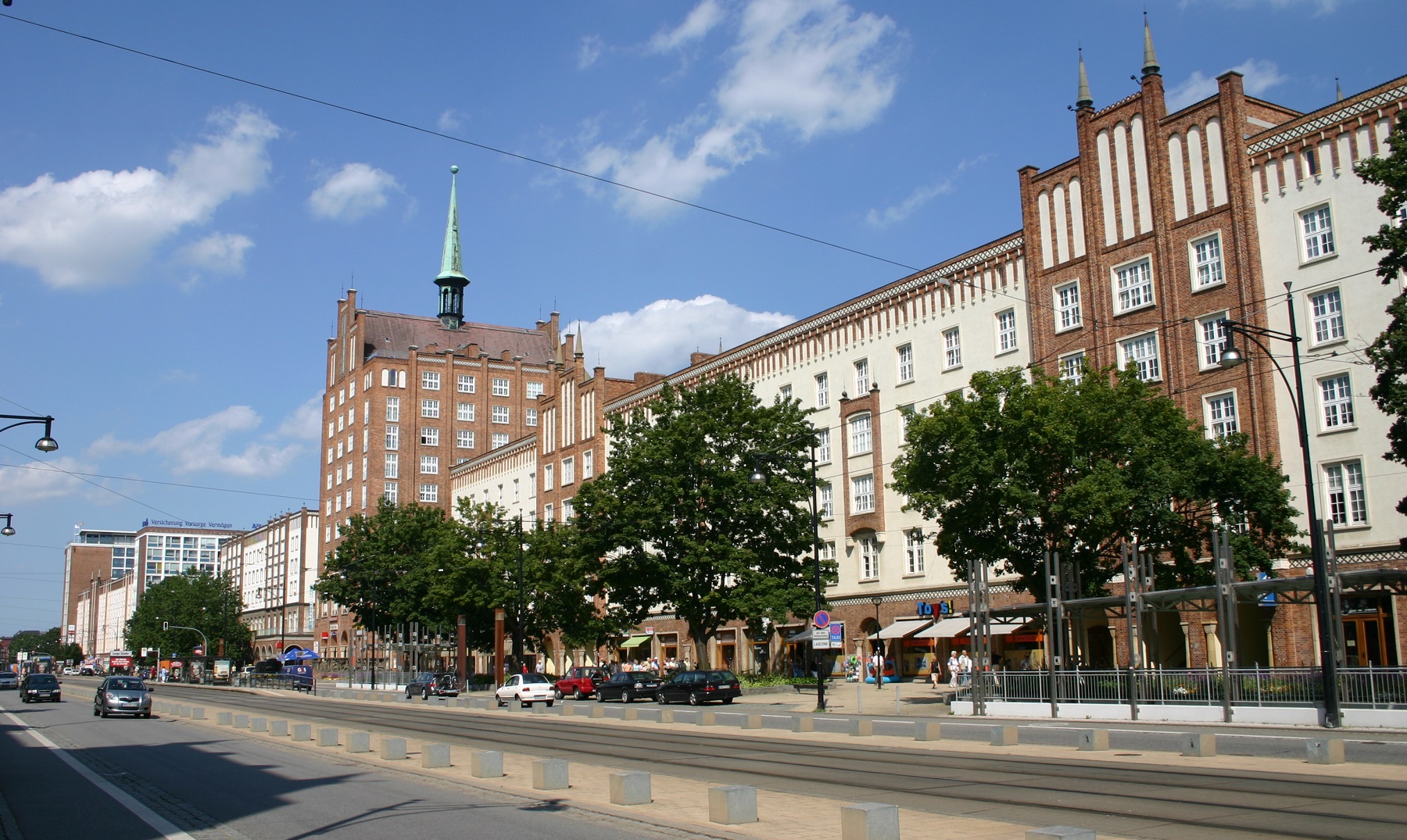
The street Lange Straße is a wide street with a number of imposing 20th century buildings on each side. The current buildings were built in the early reconstruction phase of the GDR where grand architecture was used.
Kröpeliner Straße is Rostock’s leading shopping street, and besides the many good shops you can admire several old gabled houses and beautiful squares and a nice city atmosphere along the road.
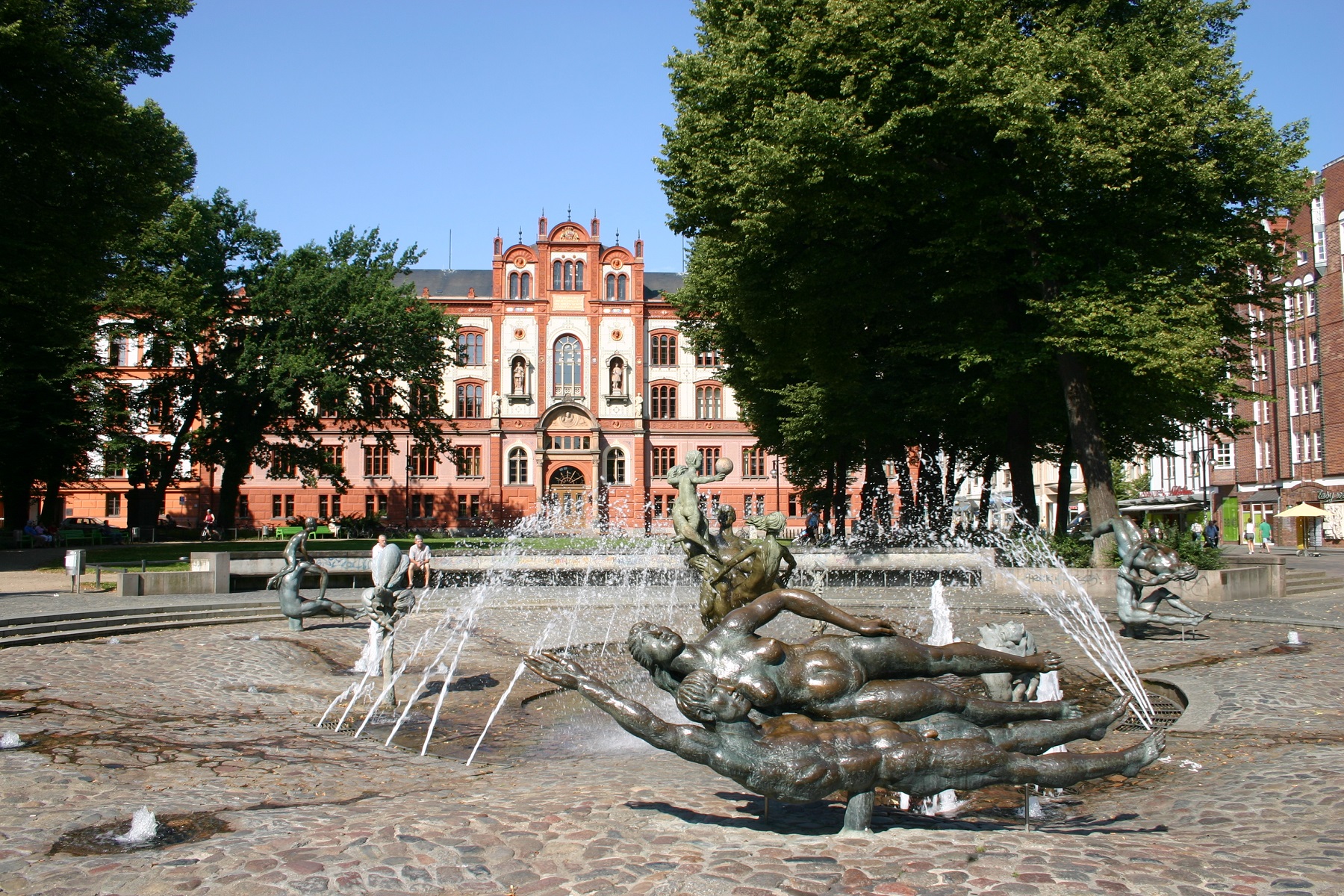
This is a nice square, where you can see a memorial for the Rostock citizen Gebhard Leberecht von Blücher. You can also see an example of the so-called Plattenbau construction from the GDR-era at the square.
Rostock City Hall has been the city’s political center for more than 700 years. The current Baroque-style façade was constructed in the early 18th century, and the beautiful Festsaal hall was also created at that time.
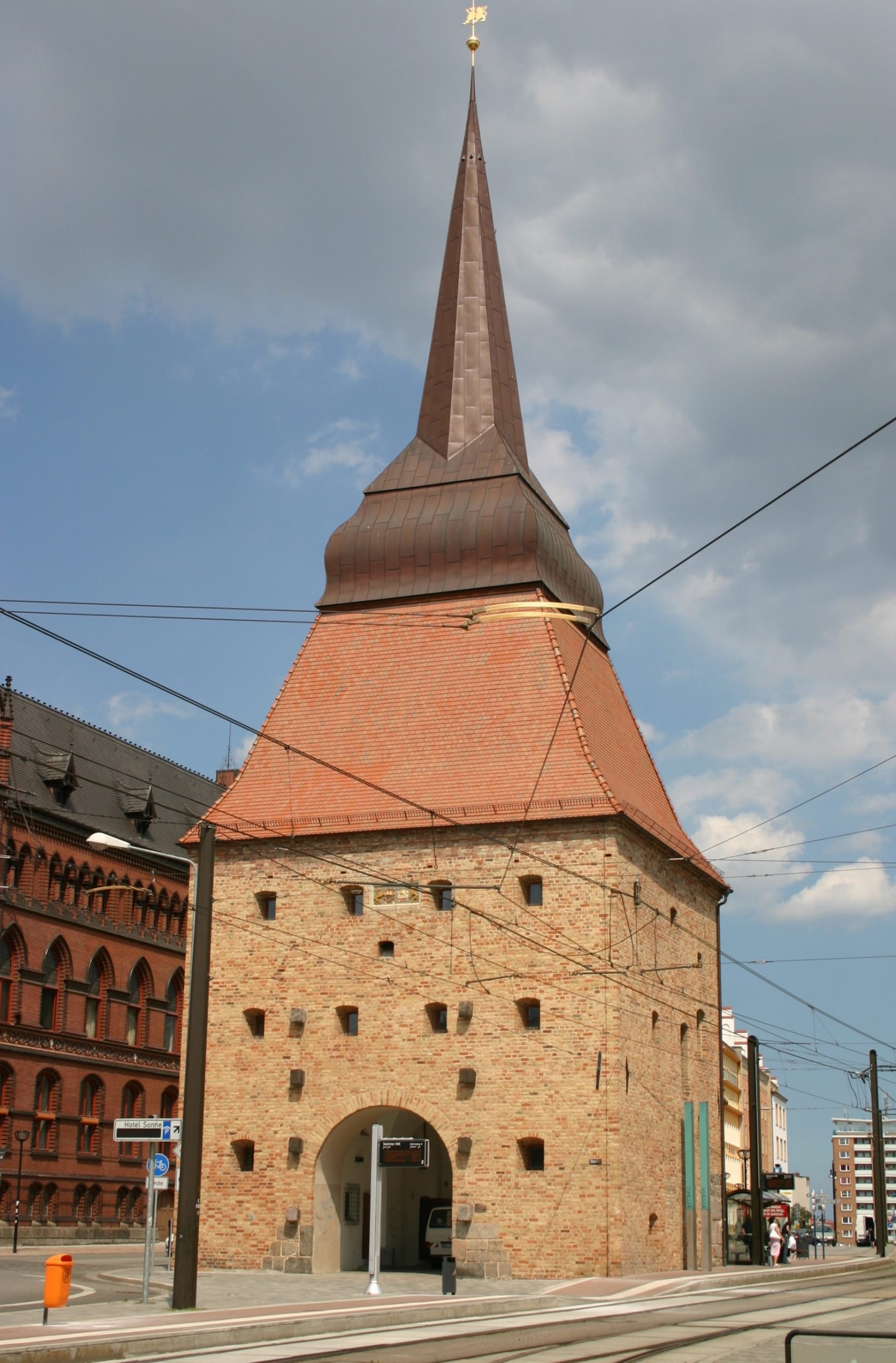
This is a city gate, which was rebuilt in the years 1574-1577. Steintor appeared from this time in the Dutch Renaissance style with an impressive portal and an almost colossal spire for a city gate.
The first St Mary’s Church was built from 1230, but had to be rebuilt after a collapse in 1398. The church became the largest in the city, and there is much to see here. Notice the baptismal font from 1290, the high altar from 1721 and the astronomical clock from 1472.
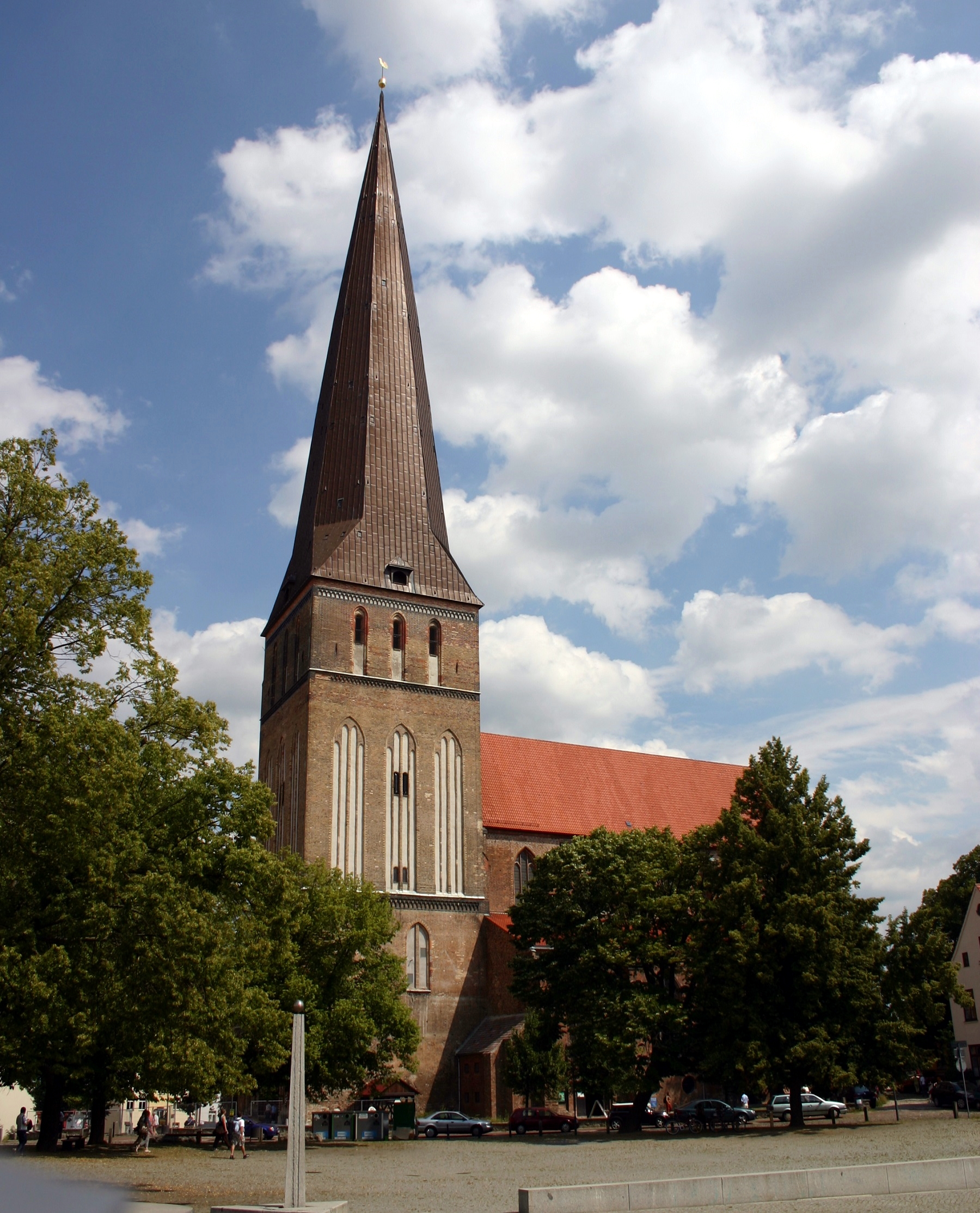
With its 117 meters/383 feet high tower, St Peter’s Church can be seen from virtually all parts of Rostock. The church is historically interesting because it marks the site of the city’s founding.
This is one of the most beautiful concert halls in northern Germany. It was built in 1750 in the former palace of the Dukes of Mecklenburg-Schwerin. The palace itself was built in 1714 under Duke Carl Leopold, who wanted to use the house during visits to Rostock.
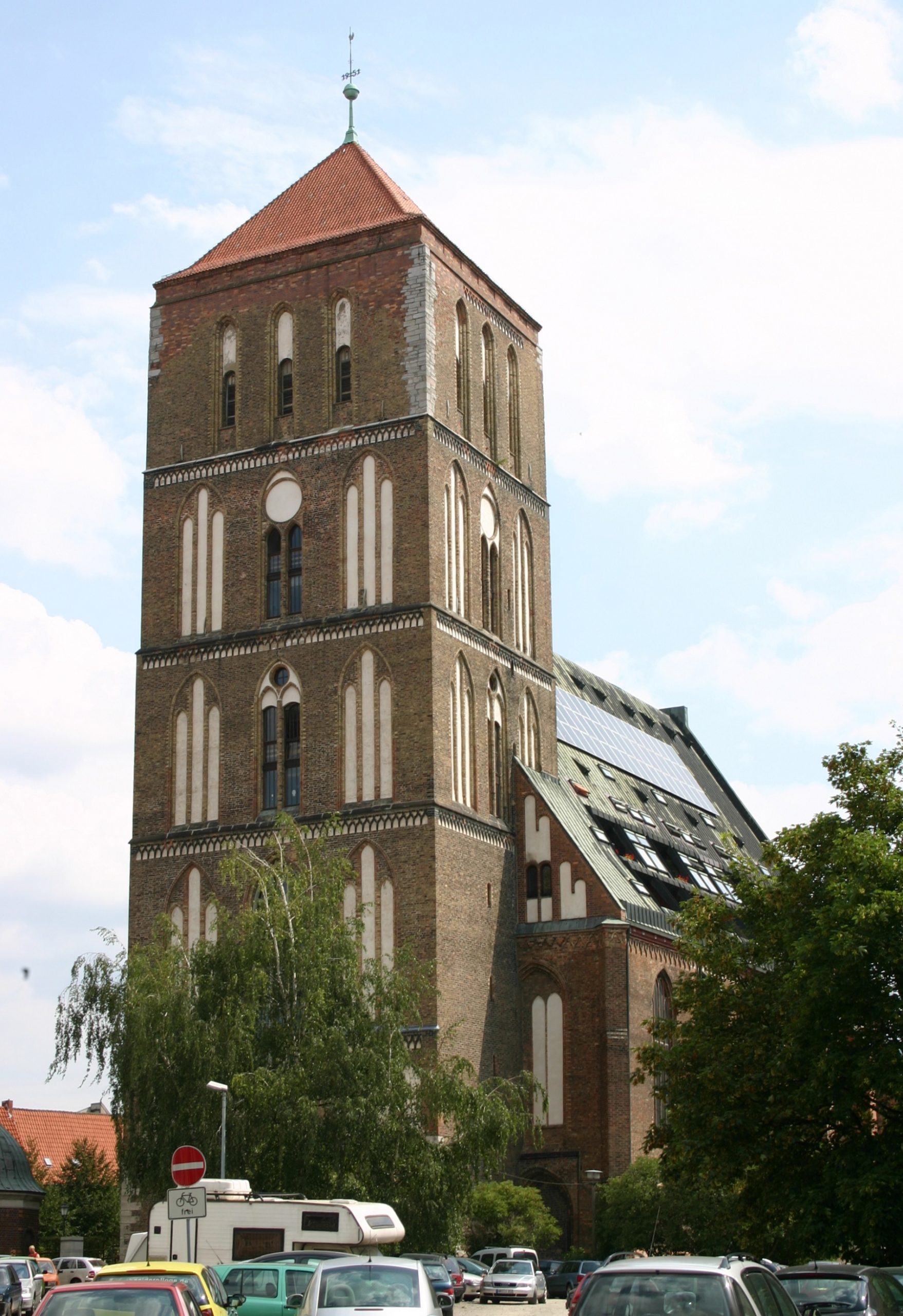
St Nicholas is Rostock’s oldest surviving church, and it is one of the city’s three large medieval churches. In the 20th century, the purpose of the church was changed and homes were built on the high roof. Today the church is used again as intended.
Mönchentor is one of the city gates of Rostock’s time as enclosed by city walls; it is the only one preserved on the so-called water side. The gate was opened in 1316 for the first time.
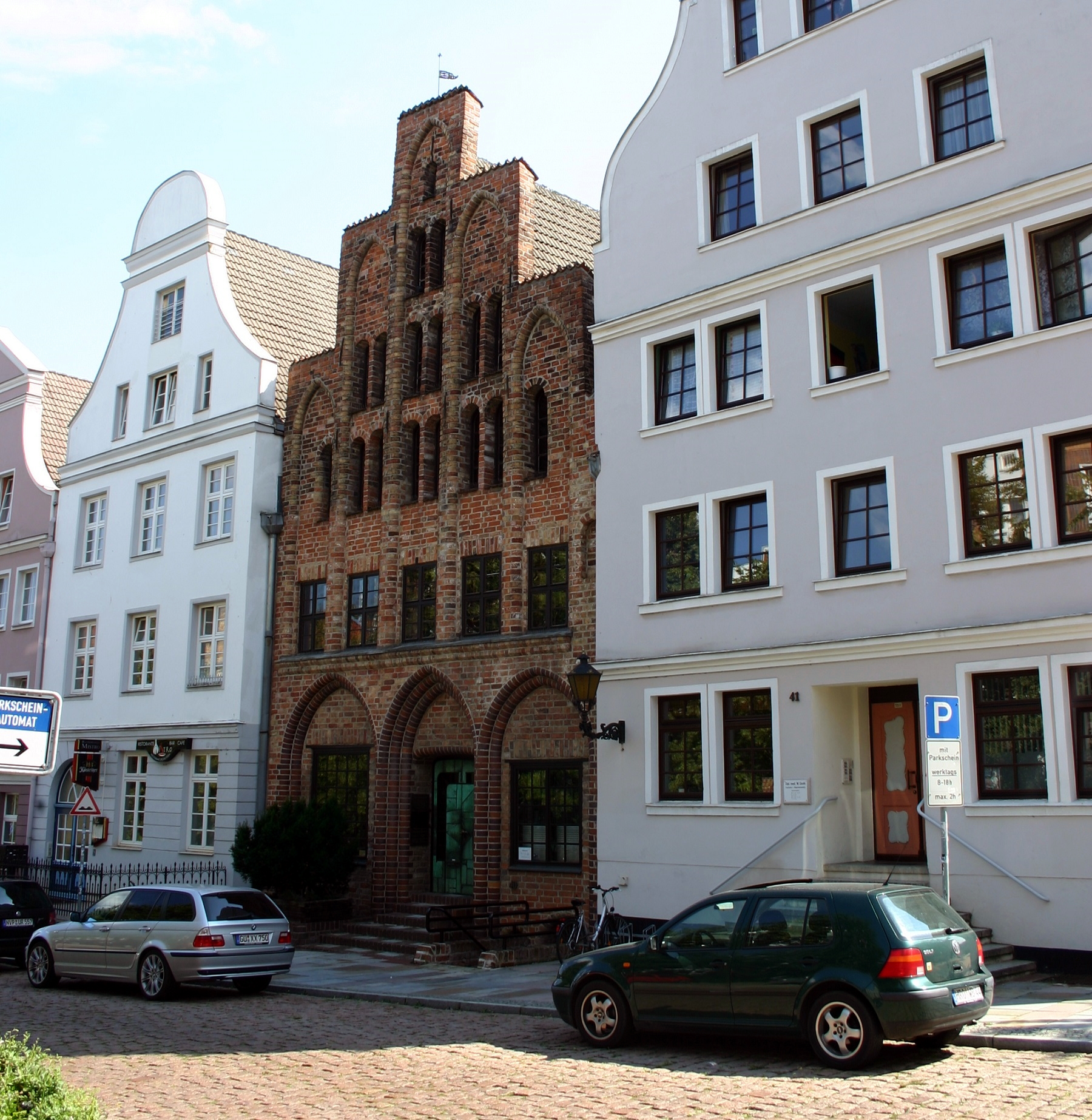
This is a typical Gothic style house, which has been named after its construction style, which is like a tree. The tree supports the stones of the house with the idea of a thick trunk at the bottom with branches at the top.
The Kröpeliner Tor is the name of the city gate that formed the historical access to Rostock from the west. The gate was built around year 1300.
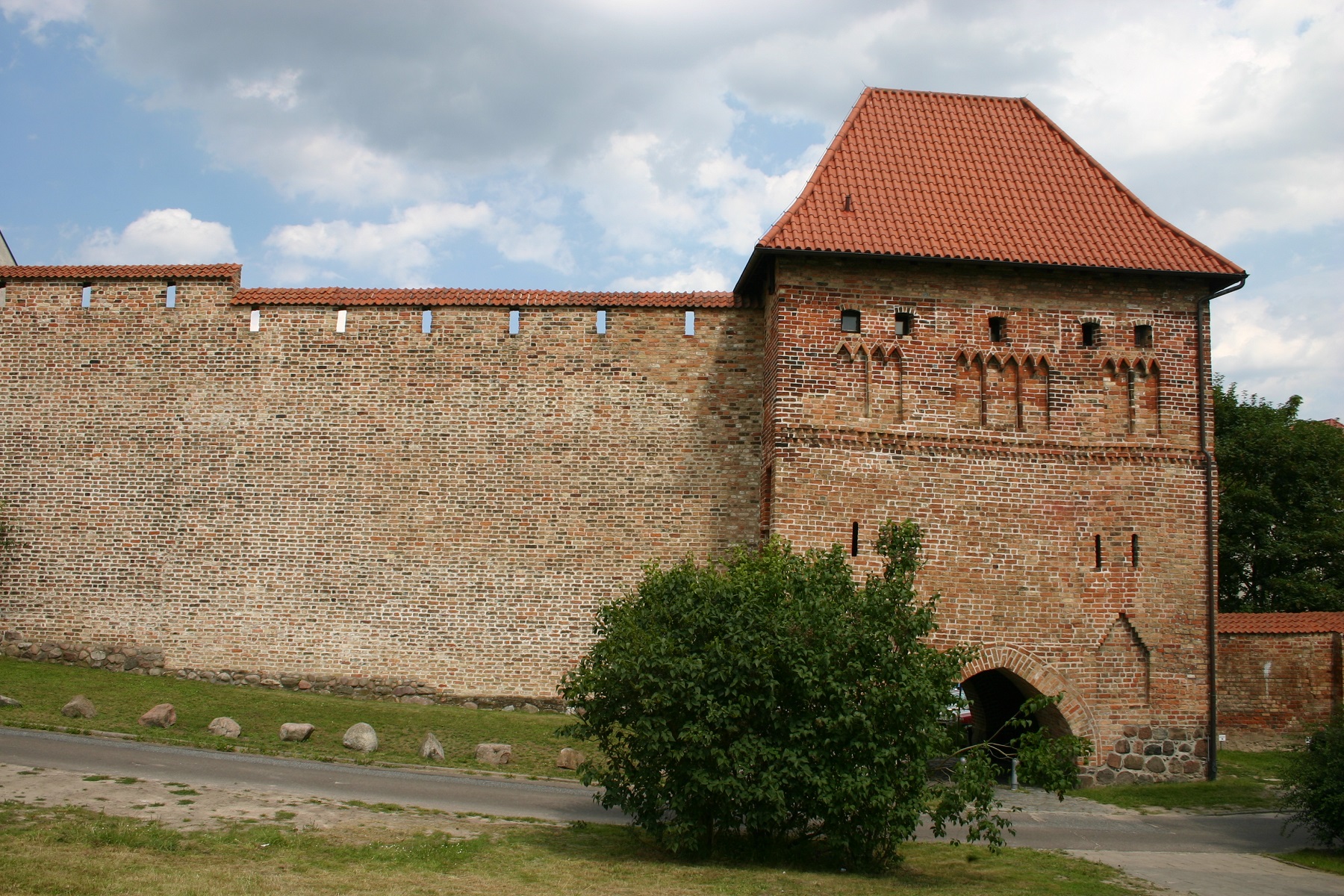
The Kuhtor city gate is the oldest in the whole of Mecklenburg, it was first mentioned in 1262. The gate was styled as an actual part of the city’s fortifications, and it was originally the main gate to the south.
The area around the street Am Vögenteich is an area with an interesting urban planning, since it shows the efforts to create a modern city in the GDR era.

Warnemünde is a port city located as a northern suburb of Rostock. In Warnemünde there are several things to see and do. In summer, the city’s wide and long sandy beach is a major draw for the entire area.
Bad Doberan is a nice town west of Rostock. It is a place with several sights, and it is from here, the famous narrow gauge railway Mollibahn departs through the streets of Bad Doberan on the way towards the resort towns of Kühlungsborn and Heiligendamm.

Heiligendamm is a spa town, founded as such already in 1793. This makes it the oldest of its kind in Germany and continental Europe. In Heiligendamm you can enjoy the beaches and the beautiful spa buildings that surround the Grand Hotel Heiligendamm.
Wismar is one of the historic North German Hanseatic cities, where you can see many old buildings in the so-called Brick Gothic. This architectural style is typical for the once prosperous cities of the Hanseatic League. In Wismar you should see the market square, the great churches of the city and the old harbor.
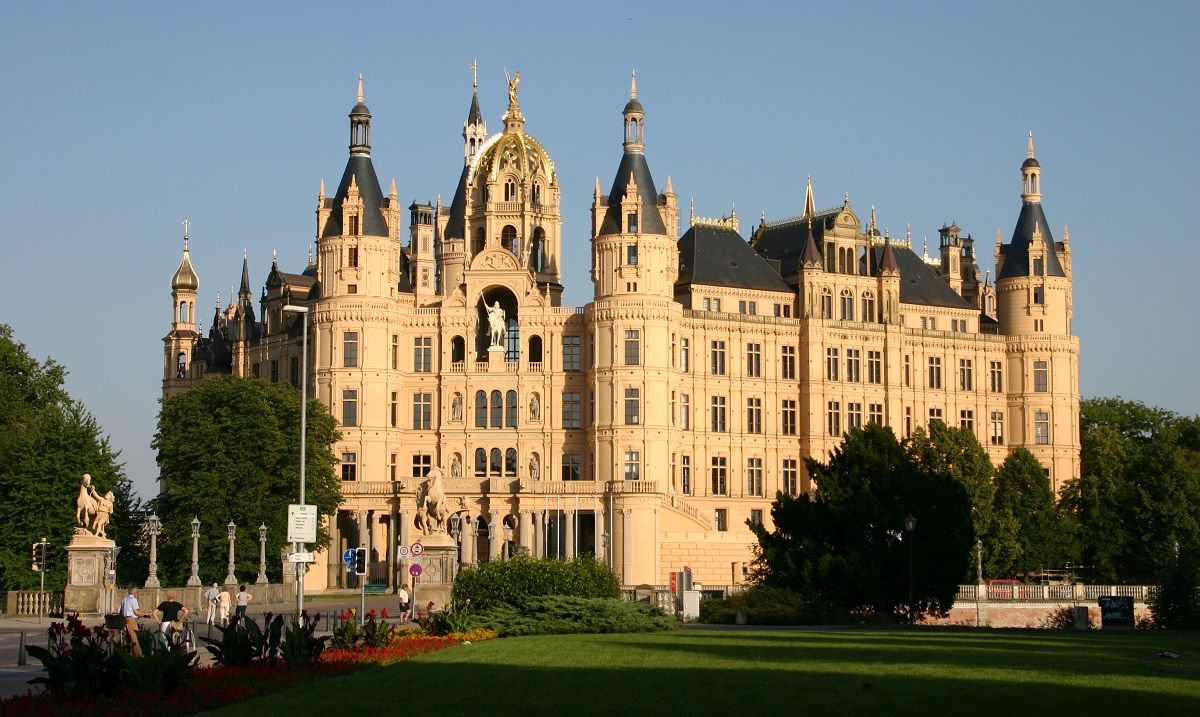
Schwerin is the capital of the state of Mecklenburg-Western Pomerania and the historic residence city of the dukes and grand dukes of Mecklenburg-Schwerin. Schwerin Castle is a true fairy tale construction with its many towers and spires. It is a must visit during a walk in the city, but many other large buildings are also here within a comfortable walking distance.
Güstrow is a city in Mecklenburg-Western Pomerania with a center that has been built over the centuries. The city is today best known for its Renaissance castle, but there are many other sights in Güstrow as well. Distances are short in the old town, where you will find the market square with the city’s elegant town hall.
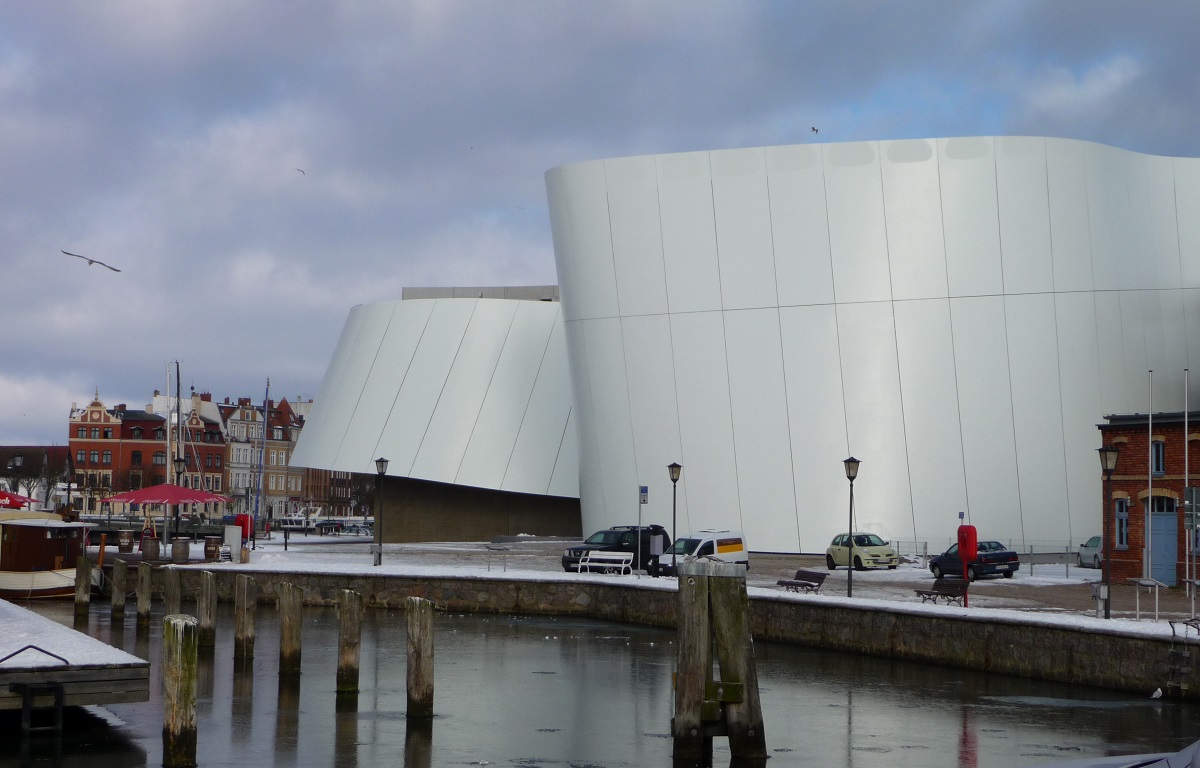
Stralsund’s rich history as a thriving Hanseatic city is seen everywhere in the city, with merchant’s house, guild houses and more located in the streets between the three large churches and other public buildings. The city center is inscribed in UNESCO’s list of world heritage sites.
The Hanseatic city of Greifswald on the small river Ryck is a nice city with everything that belongs to the character of a northern German city. Beautiful buildings, impressive churches, a central market square and a town hall with roots in the Hanseatic era are just some of the highlights.
Lange Straße 29-31
galeria-kaufhof.de
Kröpeliner Straße 26-28
rostockerhof.de
Hanse Straße 37, Bentwisch
hansecenter-bentwisch.de
Werftstraße 50
neptuneinkaufcenter.de
Goostorfer Street 50
real.de
Kröpeliner Straße, Breite Straße, Lange Straße, Doberaner Platz
Hafenrundfahrt
Am Strand
rostocker-flotte.de
Molli-Bäderbahn
Bad Doberan Bf.
molli-bahn.de
Zoo Rostock
Rennbahnallee 21
zoo-rostock.de
Rostock is the largest city in Mecklenburg-Western Pomerania, and it is one of Germany’s largest port cities, due in part to its proximity to Berlin just a few hours drive to the south. However, the start was quiet, for centuries from the 600s it is thought to have spread settlement here south of the mouth of the Warnow River.
Slaves are believed to have founded the actual town of Roztoc in the 11th century. In 1161, the Danish King’s troops destroyed Roztoc, which was subsequently rebuilt. The town was located around the present Alte Markt, and around 1200 the German Rostock was founded at the present St. Petri Church. Shortly thereafter, a new district was established at the Neuer Markt, and thus two Rostocks were close to each other. In 1218, Rostock was first described, so at that time the town was obviously established.
1251 was the year in which Danish King Abel granted Rostock commercial and commercial rights identical to Lübeck’s, and thus began the path towards status as one of the rich Hanseatic cities. In the competition with other North German trading towns, not least Lübeck and Wismar, Rostock erected city walls in the 13th century, and they became the limit for the city’s growth until the 19th century.
In 1283, a larger federation of northern German trading towns was founded, the Rostocker Landfriedensbündnis, and with that the focus was on protection and development of trade. In 1323, Rostock bought Warnemünde from the Danes, and thus Rostock’s trade could grow further. Two years later, the city gained coin rights and the coin foot Rostocker Pfennige was minted. All in all, Rostock’s importance and cultural development emphasized the city as well, among other things, the university was already founded in 1419.
Rostock developed in the Hanseatic League until the Thirty Years War finally put an end to Hansen. Repeated looting was exposed to the city before it had to capitulate in 1631 to the Swedes who ruled Rostock until 1648, when they retreated to Warnemünde. As if that wasn’t enough, about a third of the city burned down in 1677, and the city’s inhabitants had fallen from 15,000 to 5,000 since the heyday of the late 1500s. Rostock’s importance and success as a trading town was gone for a period of time.
By the end of the 18th century conditions had improved and Rostock was again on the road to better times. France occupied Mecklenburg in 1806, and Rostock had to submit to French demands and conditions. The village child Gebhard Leberecht von Blücher was one of those who fought against France, and he is honored to this day in his native city.
The 19th century brought industrialization to Rostock, and in 1830 the city broke out of its boundaries, which until then had been cut off by the lines of the old city walls. Founded in 1891, the Neptune shipyard was one of Mecklenburg’s largest industries. At the same time, Warnemünde was established as one of the most visited German spa towns, and it all brought new prosperity to Rostock.
The positive development continued at the beginning of the 20th century, when the Heinkel aircraft factory was founded in 1922. Heinkel, among other things, produced the world’s first functional jet aircraft. Starting from the Heinkel factory and the city’s yards, Rostock became one of the centers for the armor industry in the years up to and during World War II. As a result, English bombings destroyed parts of both Rostock and Warnemünde as early as 1942. Only about 20% of Rostock’s residential houses escaped unscathed throughout the war years, which is why a major reconstruction work was undertaken by the GDR from 1945.
In the 1950s, prestigious buildings were erected in Rostock in the so-called socialist or Soviet classicism, and the impressive buildings can be seen among others in Lange Straße. The redevelopment in the center has generally been done with modern buildings adapted to the historic Hanseatic style with gabled houses, and it has given the city center an exciting mix of old and new that is not seen in other Hanseatic cities of the state. In the suburbs of Rostock, you can see some of the large residential buildings in components, Plattenbau, that were supposed to alleviate the housing need in a city that became increasingly important during the GDR.
Rostock became the port of Berlin after the Polish takeover of Stettin / Szczecin, and shipping, trade and shipbuilding once again marked the old Hanseatic city. In 1988, the population reached 250,000.
In recent years, the city center has been extensively renovated and many new buildings have been renovated. The traffic network has been expanded with, among other things, a tunnel under the Warnow River, and the efficient tram network almost newly constructed. It was thus a very efficient and beautiful city, hosted by the G8 meeting in the spring of 2007 and welcoming tourists today.
Overview of Rostock
Rostock is one of the northern German cities, which grew with the Hanseatic League’s trade and financial success, and its historical wealth has been the source to a lot of constructions, that can be seen today. Large churches, the region’s oldest university and a lot of culture are some of the things you can look forward to in Rostock, which has also benefited from the investments of both former dukes and the GDR.
Rostock is a small metropolis with all that it entails. Business districts and shopping malls, good restaurants and a varied cityscape provide many choices of activities during a visit. A walk in the city center is the best way to explore the city where it is never far between sights.
About the upcoming Rostock travel guide
About the travel guide
The Rostock travel guide gives you an overview of the sights and activities of the German city. Read about top sights and other sights, and get a tour guide with tour suggestions and detailed descriptions of all the city’s most important churches, monuments, mansions, museums, etc.
Rostock is waiting for you, and at vamados.com you can also find cheap flights and great deals on hotels for your trip. You just select your travel dates and then you get flight and accommodation suggestions in and around the city.
Read more about Rostock and Germany
Buy the travel guide
Click the “Add to Cart” button to purchase the travel guide. After that you will come to the payment, where you enter the purchase and payment information. Upon payment of the travel guide, you will immediately receive a receipt with a link to download your purchase. You can download the travel guide immediately or use the download link in the email later.
Use the travel guide
When you buy the travel guide to Rostock you get the book online so you can have it on your phone, tablet or computer – and of course you can choose to print it. Use the maps and tour suggestions and you will have a good and content-rich journey.
Kröpelin Street • Baroque Hall • Great Churches • City Gates • Warnemünde
Overview of Rostock
Rostock is one of the northern German cities, which grew with the Hanseatic League’s trade and financial success, and its historical wealth has been the source to a lot of constructions, that can be seen today. Large churches, the region’s oldest university and a lot of culture are some of the things you can look forward to in Rostock, which has also benefited from the investments of both former dukes and the GDR.
Rostock is a small metropolis with all that it entails. Business districts and shopping malls, good restaurants and a varied cityscape provide many choices of activities during a visit. A walk in the city center is the best way to explore the city where it is never far between sights.
About the upcoming Rostock travel guide
About the travel guide
The Rostock travel guide gives you an overview of the sights and activities of the German city. Read about top sights and other sights, and get a tour guide with tour suggestions and detailed descriptions of all the city’s most important churches, monuments, mansions, museums, etc.
Rostock is waiting for you, and at vamados.com you can also find cheap flights and great deals on hotels for your trip. You just select your travel dates and then you get flight and accommodation suggestions in and around the city.
Read more about Rostock and Germany
Buy the travel guide
Click the “Add to Cart” button to purchase the travel guide. After that you will come to the payment, where you enter the purchase and payment information. Upon payment of the travel guide, you will immediately receive a receipt with a link to download your purchase. You can download the travel guide immediately or use the download link in the email later.
Use the travel guide
When you buy the travel guide to Rostock you get the book online so you can have it on your phone, tablet or computer – and of course you can choose to print it. Use the maps and tour suggestions and you will have a good and content-rich journey.

With its 117 meters/383 feet high tower, St Peter’s Church can be seen from virtually all parts of Rostock. The church is historically interesting because it marks the site of the city’s founding.
This is one of the most beautiful concert halls in northern Germany. It was built in 1750 in the former palace of the Dukes of Mecklenburg-Schwerin. The palace itself was built in 1714 under Duke Carl Leopold, who wanted to use the house during visits to Rostock.

St Nicholas is Rostock’s oldest surviving church, and it is one of the city’s three large medieval churches. In the 20th century, the purpose of the church was changed and homes were built on the high roof. Today the church is used again as intended.
Mönchentor is one of the city gates of Rostock’s time as enclosed by city walls; it is the only one preserved on the so-called water side. The gate was opened in 1316 for the first time.

This is a typical Gothic style house, which has been named after its construction style, which is like a tree. The tree supports the stones of the house with the idea of a thick trunk at the bottom with branches at the top.
The Kröpeliner Tor is the name of the city gate that formed the historical access to Rostock from the west. The gate was built around year 1300.

The Kuhtor city gate is the oldest in the whole of Mecklenburg, it was first mentioned in 1262. The gate was styled as an actual part of the city’s fortifications, and it was originally the main gate to the south.
The area around the street Am Vögenteich is an area with an interesting urban planning, since it shows the efforts to create a modern city in the GDR era.
Similar to Rostock Travel Guide
There are no listings matching your search.
Reset